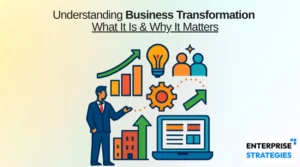In the rapidly evolving landscape of enterprise technology, businesses face significant challenges when undertaking large-scale HR and finance transformations. These projects often necessitate the integration of new software solutions and consulting expertise to streamline processes, enhance efficiency, and maintain competitive advantage. One critical decision in this journey is whether to employ multiple consulting and software vendors. While this approach can offer a breadth of benefits, it also comes with its share of challenges. Here, I explore the pros and cons of using multiple vendors in HR and finance transformations.
The Pros of Using Multiple Vendors
-
Specialized Expertise: Different vendors bring specialized skills and industry knowledge. A software vendor might excel in providing robust financial management solutions, while another may specialize in advanced HR analytics. Leveraging multiple vendors allows companies to tap into these niche areas of expertise, leading to more comprehensive and effective solutions.
-
Best-in-Class Solutions: By selecting multiple vendors, businesses can integrate best-in-class products and services for each component of the transformation. This tailored approach can result in superior system performance and better alignment with the company’s specific needs and goals.
-
Increased Innovation: Multiple vendors often mean exposure to a broader range of innovative solutions and ideas. Vendors compete to offer cutting-edge technology and services, ensuring that the company benefits from the latest advancements and industry trends.
-
Risk Mitigation: Relying on a single vendor can be risky if they encounter issues or fail to deliver as expected. Diversifying vendors can mitigate these risks, ensuring that the failure of one does not derail the entire transformation project.
The Cons of Using Multiple Vendors
-
Complex Integration: One of the primary challenges of using multiple vendors is the complexity of integrating different systems and technologies. Ensuring seamless communication and data flow between various platforms requires meticulous planning and robust integration strategies, which can be both time-consuming and costly.
-
Increased Management Overhead: Managing multiple vendors demands more coordination and oversight. This can place additional strain on internal resources, as project managers must juggle relationships, timelines, and deliverables from various sources.
-
Higher Costs: While using multiple vendors can lead to superior solutions, it can also be more expensive. Each vendor has its pricing structure, and the cumulative costs can quickly escalate, especially when considering integration, customization, and ongoing maintenance.
-
Potential for Misalignment: Different vendors may have varying methodologies, cultures, and business objectives. Aligning these diverse elements to ensure they work harmoniously towards the company’s overall transformation goals can be challenging. Misalignment can lead to project delays, increased costs, and suboptimal outcomes.
Best Practices for Managing Multiple Vendors
To maximize the benefits and minimize the drawbacks of using multiple vendors, businesses should consider the following best practices:
-
Clear Communication: Establish clear communication channels and protocols from the outset. Ensure all vendors understand the project’s goals, timelines, and their specific roles and responsibilities.
-
Strong Governance Framework: Implement a robust governance framework to oversee the entire project. This includes regular progress reviews, performance metrics, and a clear escalation path for resolving issues.
-
Dedicated Integration Team: Consider forming a dedicated integration team responsible for ensuring seamless collaboration between vendors. This team can focus on technical integration, data consistency, and process alignment.
-
Vendor Collaboration: Foster a collaborative environment among vendors. Encourage them to work together, share insights, and align their efforts towards the common goal. Collaboration can be facilitated through joint workshops, regular coordination meetings, and shared project management tools.
-
Risk Management: Develop a comprehensive risk management plan that identifies potential risks associated with using multiple vendors and outlines mitigation strategies. Regularly review and update this plan to address emerging risks.
Conclusion
Undertaking an HR and finance enterprise transformation with multiple consulting and software vendors can offer significant advantages in terms of expertise, innovation, and risk mitigation. However, it also presents challenges related to integration, management, and costs. By adopting best practices in vendor management and fostering a collaborative approach, businesses can navigate these complexities and achieve a successful transformation that drives long-term value and growth.




